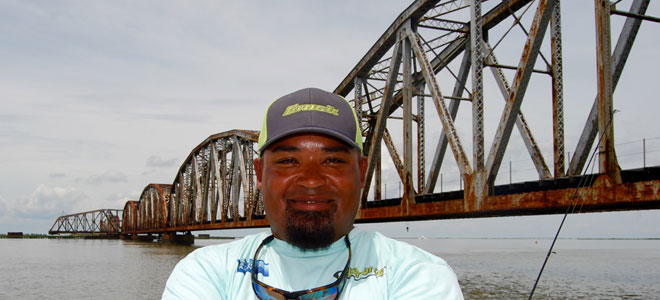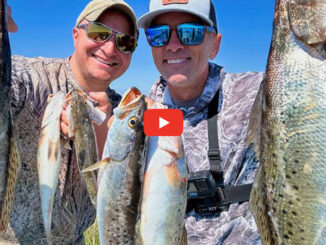
Capt. Kris Robert prefers a falling tide for speckled trout and redfish action
Capt. Kris Robert said he thinks speckled trout act a lot like people when dealing with summertime heat: If they get hot, they go somewhere where they can cool down. And they prefer not to gorge themselves during the height of the heat of day.
That means early morning trips where cooler, deeper water and easily accessible bait are readily available.
Robert, who fishes in and around Lake Pontchartrain and Lake Borgne with One Last Cast Charters in Slidell, said both the Highway 90 bridge and the L&N (CSX) Train Bridge in the Rigolets are two of his top trout-producing spots this month.
“Now we’re transitioning to deepwater stuff,” he said. “July and August are hot water months, so the trout will start moving to deeper passes where the fish can go back and forth depending on the current and how hot it gets.
“They have deep, cooler water with current and bait there, and they’ll feed, feed, feed.”
A big key for success on the L&N Bridge is monitoring the tide, as well as being aware of the level of the West Pearl River — which is only about a mile away in the Rigolets.
“Generally, you want a falling tide because everything gets sucked out of Lake Pontchartrain,” he said. “I’d like to see the West Pearl get down below 6 feet. At that point, the freshwater gets pushed back by all the saltwater.”
The train bridge is made up of multiple sections, but the east side of the northern two sections — which locals refer to as the Community Hole — get the bulk of trout anglers’ attention.
“Once you get to the northernmost main section of the bridge, then the water depth goes to 20 to 24 feet out to the midpoint,” he said. “Closer to the south side, it goes to 50, 60 and 70 feet of water.
“So you want to position your boat in that 20- to 24-foot range. Back behind the boat, it will drop off to 30 to 40 feet of water. The fish are hanging out in deeper water, and that bait is getting swept off that ledge and the fish are coming up to ambush the bait in the current.”
But if you plan on fishing the L&N, Robert said you better set your alarm clock and get there early, because space is definitely limited.
“If you wake up too late, you’ve already made your first mistake,” he said with a chuckle. “Get there early in the morning, start soaking those shrimp at daylight and get that chum slick going. Those fish will get on that ledge.”
Robert favors a drop-shot rig with live shrimp thrown behind his boat on the northeast side of the bridge at the Community Hole, and uses up to a 2-ounce bank sinker depending on the current.
“I’ve fished it when that tide is ripping through there,” he said. “If you can find that little section of bridge where the tide is not moving so hard, and you can get the bait down there, they’ll be down there waiting for it.”
Specks also will often bite on Carolina-rigged Matrix Shad once the drop-shot shrimp get them fired up, he said.
“Once they get going on that shrimp, then you get that reaction bite,” Robert said. “They’ll jump on it if it looks close enough.”
Robert said once the tide stops, you don’t necessarily have to abandon the area — a mistake he sees anglers make regularly. When the tide changes, you can fish straight down, or even roll the bait westward through the bridge for specks.
“Once it goes slack, we’ll shoot to the middle of the bridge real quick and fish there to catch drum and redfish, and when the tide starts trickling again, you can slide back to the north end and try to get those trout working again,” he said. “People think the bite is over and leave too soon once the tide starts to die.
“In reality, the tide is just changing, and once it moves again, they’ll feed again. So hang out a little while.”
Capt. Kris Robert with One Last Cast Guide Service can be reached at 228-284-9502.


